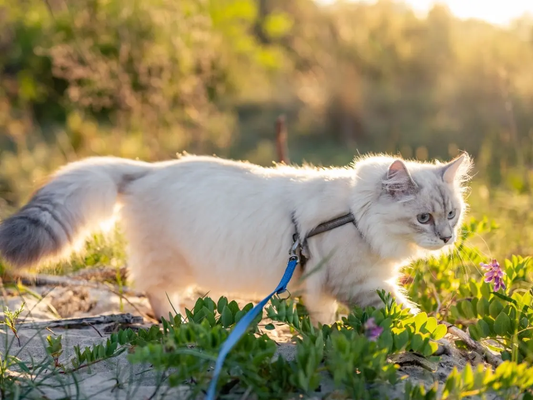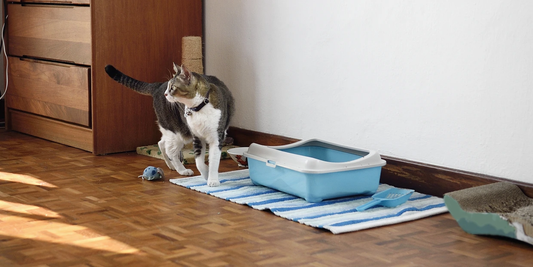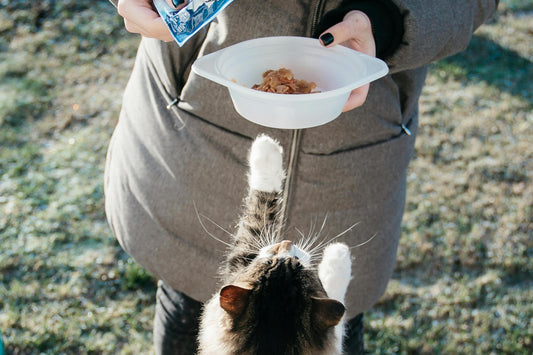Introduction
Introducing a new pet into your home can be an exciting yet daunting experience. Whether you're bringing home a furry feline friend or adding a canine companion to the mix, ensuring a smooth introduction between a cat and a dog is crucial for fostering a peaceful coexistence. In this guide, we'll delve into expert strategies and practical advice on how to introduce a cat to a dog successfully. From understanding their behaviors to implementing gradual introductions, we've got you covered every step of the way.
Understanding Canine and Feline Behaviors
Before diving into the introduction process, it's essential to grasp the inherent behaviors of both cats and dogs. Cats tend to be territorial creatures, valuing their personal space and often displaying cautious or defensive behaviors when confronted with unfamiliar animals. On the other hand, dogs are known for their social nature, craving companionship and interaction with other pets and humans.
Instinctual Responses
Cats may exhibit hissing, growling, or hiding behaviors when feeling threatened or overwhelmed, while dogs might display excitement or curiosity upon encountering a new companion. Understanding these instinctual responses is key to facilitating a gradual and stress-free introduction.
Preparing Your Home
Creating a conducive environment is crucial before initiating the introduction process. Start by designating separate spaces for your cat and dog, ensuring they have their own territories equipped with food, water, litter boxes, and bedding. This helps alleviate potential conflicts over resources and provides each pet with a safe retreat.
Scent Exchange
To familiarize your pets with each other's scents before a face-to-face introduction, consider exchanging bedding or toys between them. This scent swapping technique can help mitigate initial tension and promote a sense of familiarity.
Gradual Introduction Techniques
Introducing a cat to a dog should be approached with patience and caution. Rushing the process can lead to stress and hostility between your pets. Instead, opt for gradual introduction techniques that allow them to acclimate to each other's presence at their own pace.
Visual Introduction
Start by allowing your cat and dog to see each other from a distance, such as through a baby gate or cracked door. Observe their body language closely and look for signs of curiosity or agitation. Reward calm behavior with treats or praise to reinforce positive associations.
Controlled Encounters
Once both pets show signs of curiosity rather than aggression, proceed to controlled face-to-face encounters on leashes or harnesses. Keep these initial interactions short and supervised, gradually increasing their duration as they become more comfortable in each other's presence.
Building Positive Associations
Encourage positive associations between your cat and dog by incorporating enjoyable activities into their interactions. Engage them in play sessions with interactive toys or reward them with treats for calm and friendly behavior towards each other.
Feeding Time
Another effective strategy is to feed your cat and dog in close proximity, with separate bowls, during meal times. This allows them to associate each other's presence with positive experiences, fostering a sense of camaraderie.
Addressing Challenges
Despite your best efforts, challenges may arise during the introduction process. It's important to remain patient and adaptable, addressing any conflicts or setbacks with tact and understanding.
Seeking Professional Guidance
If tensions persist or escalate between your cat and dog, don't hesitate to seek guidance from a professional animal behaviorist or veterinarian. They can provide tailored advice and interventions to facilitate a harmonious relationship between your pets.
Conclusion
Introducing a cat to a dog requires patience, understanding, and a strategic approach. By taking the time to understand your pets' behaviors, creating a supportive environment, and implementing gradual introduction techniques, you can lay the foundation for a strong and harmonious bond between them. Remember to prioritize positive reinforcement, remain vigilant during interactions, and seek professional assistance if needed. With time and dedication, your cat and dog can become the best of friends, enriching your life with their playful antics and unwavering companionship.
FAQs
How do I know if my cat and dog will get along? Observing their initial reactions during controlled introductions can provide insight into their compatibility. Look for signs of curiosity, calmness, and respectful behavior towards each other.
What should I do if my cat and dog don't get along? If conflicts arise, consider consulting with a professional animal behaviorist for personalized advice and interventions. They can assess the dynamics between your pets and recommend strategies to address underlying issues.
Can I leave my cat and dog alone together? It's advisable to supervise their interactions, especially during the initial stages of introduction. Gradually increase their unsupervised time together as they build trust and familiarity.
How long does it take for a cat and dog to adjust to each other? The adjustment period varies depending on the personalities and temperaments of your pets. Some may form a bond quickly, while others may require more time and patience.
Should I punish my pets for aggressive behavior? Punishment can exacerbate fear and aggression in pets. Instead, focus on positive reinforcement techniques to encourage desired behaviors and discourage aggression.
What if my cat or dog shows signs of stress during introductions? If either pet displays signs of stress or anxiety, such as excessive vocalization or avoidance behaviors, provide them with a calm and comforting environment. Consider consulting with a veterinarian for additional support and guidance.








